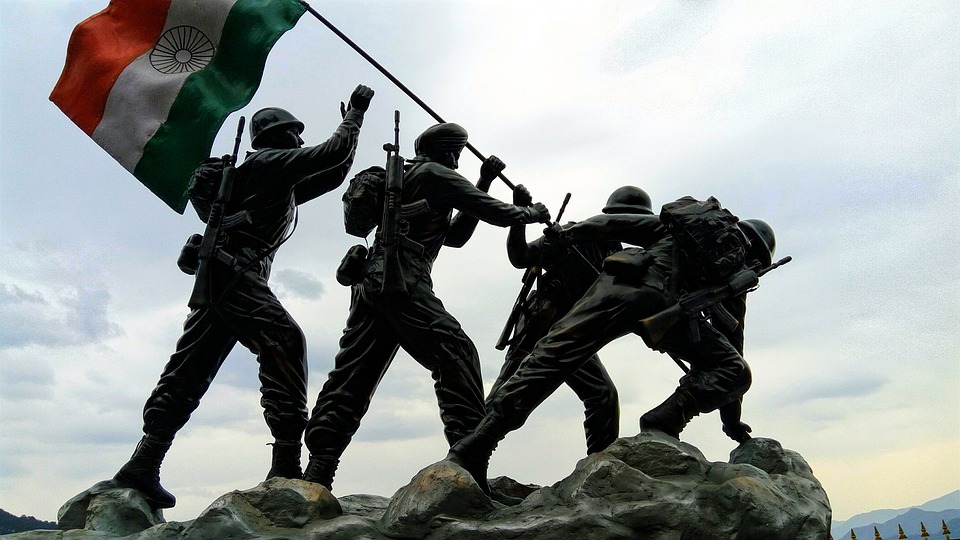
Republic Day is celebrated in India on January 26th to mark the day when the Constitution of India came into effect. On this day in 1950, India became a republic country, with a democratic government and a written constitution. Indians celebrate Republic Day to commemorate the adoption of the Indian Constitution, which outlines the fundamental rights and duties of citizens, the powers and responsibilities of the government, and the structure of the government. This day is celebrated by organizing parades, flag-hoisting ceremonies, patriotic songs, and cultural programs across the country. Children dressed in traditional Indian attire participate in cultural programs, dance, and sing patriotic songs, showcasing India’s rich cultural heritage.
Why We Celebrate 26th January as Republic Day?
The Constitution of India was drafted over a period of 2 years and was finally adopted on 26th January 1950, replacing the Government of India Act 1935. However, the Constitution was prepared the way before the chosen date, on November 26, 1949 by the Constituent Assembly.
But the question is that why we choosed 26 January to celebrate this day? The answer lies in the history of the Indian freedom struggle during which the date held significance since 1930.
- Following the abrupt termination of the Non-Cooperation Movement in February 1922 due to the Chauri Chaura incident, revolutionaries like Bhagat Singh and Chandrashekhar Azad rose to prominence in the 1920s. The 1920s therefore prepared the ground for the future direction of India's liberation struggle as they saw a new generation of Congress leaders, including Nehru, Subhash Chandra Bose, Vallabhai Patel, and C. Rajagopalachari, come of age.
- Notably, the Simon Commission, a seven-person, all-European panel led by Sir John Simon, was created by British authorities in 1927 to consider political reforms in India. This caused resentment and discontent to spread across the nation. For the first time since 1922, anti-Simon Commission demonstrations gained national traction, with "Simon Go Back" shouts resonating all over the nation.
- In response, under Motilal Nehru, the INC established its own commission. India was to be given dominion status within the Empire, according to the Nehru Report. Dominions were described as "independent communities within the British Empire, equal in status, and in no way subordinate one to another in any element of their domestic or external affairs" in the Balfour Declaration of 1926. The British Commonwealth of Nations was to be made up of all the dominions that shared a common allegiance to the Crown and allowed them to freely associate.
- Bose and Jawaharlal Nehru, two emerging leaders, favoured India severing all connections with the British Empire. They maintained that while India would have some autonomy under dominion status, the British Parliament and Crown would still be able to interfere in Indian matters. Importantly, achieving dominion status would render India a party to colonial exploitation elsewhere in the British Empire, primarily in Africa, according to both Bose and Nehru. Bose and Nehru viewed anti-colonialism through a larger global lens rather than only as a local political concern for India, having a much more radical outlook than their predecessors. Gandhi was still strongly in favour of dominion status, though, and he claimed that it would be a positive step in India's anti-colonial campaign.
- Viceroy Irwin had hinted in 1929 that India will eventually be given dominion status. Known as the Irwin Declaration, it was enthusiastically embraced by Indians but met with fierce opposition in Britain.
- India was viewed as the Empire's crown jewel and the British populace was still pro-Empire. Importantly, with its large area, resources, and population being essential to its economy at a time when the global economy was in recession, India was undoubtedly Britain's most valuable colony. Irwin reneged on his promise as a result of pressure from his native country.
- In a meeting with Gandhi, Jinnah of the Muslim League, and a few other leaders, he said he could not guarantee India would soon have dominion status. This would mark a turning moment in the debate because of how united the Congress was becoming. Indians backed ever-more "radical" objectives, the first of which was a totally independent republic, as the British were unable to implement even acceptable changes.
- In December 1929, the INC's Lahore Session met. The historic "Poorna Swaraj" resolution was formally promulgated on January 26, 1930, kicking off the final stage of India's liberation struggle with the aim of achieving total independence from British rule.
- As the nation revised its plan for Independence, Congress party members raised the Indian tricolour around the nation and patriotic songs were sung. The national movement in India "moved from the language of charity to the language of justice" with the making of this proclamation.
 |
| INC Lahore Session, 1930 |
January 26 was observed as "Independence Day" or "Poorna Swaraj Day" from 1930 till India eventually attained independence in 1947, with Indians reaffirming their devotion to sovereignty on that day. On August 15, nevertheless, exactly two years after the Japanese gave up to the Allies to finish World War II, India declared her independence from the British. The day of January 26 was chosen by leaders as the best day to declare India's new constitution. Not only did this anniversary have nationalist significance previously, but the Constitution also closely mirrored the "Poorna Swaraj" declaration from twenty years earlier.
Waah sachiv ji
ReplyDelete